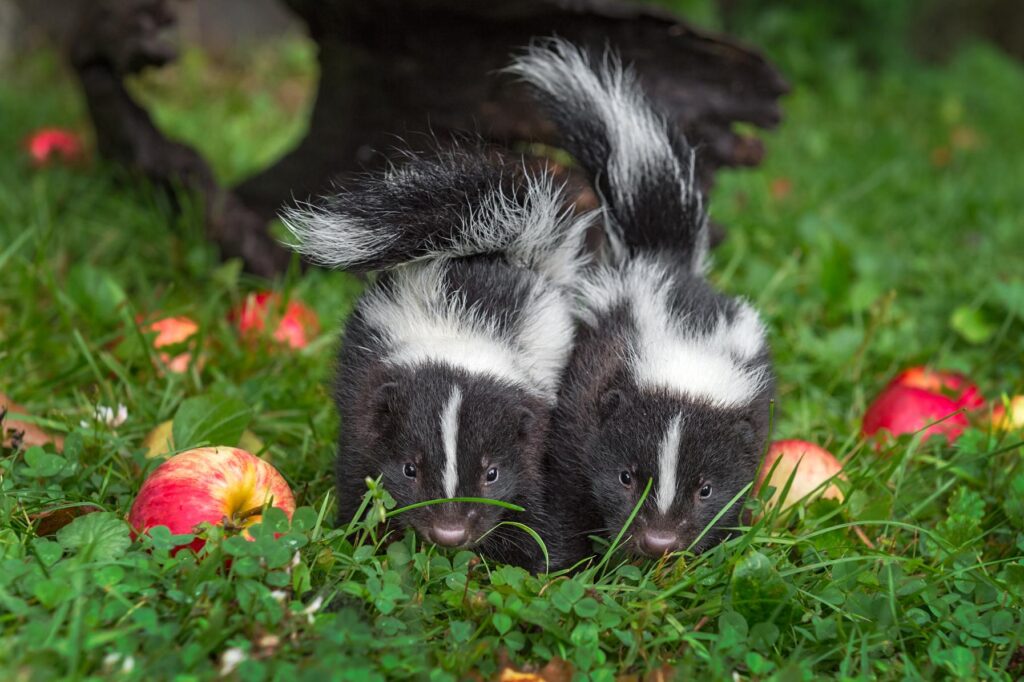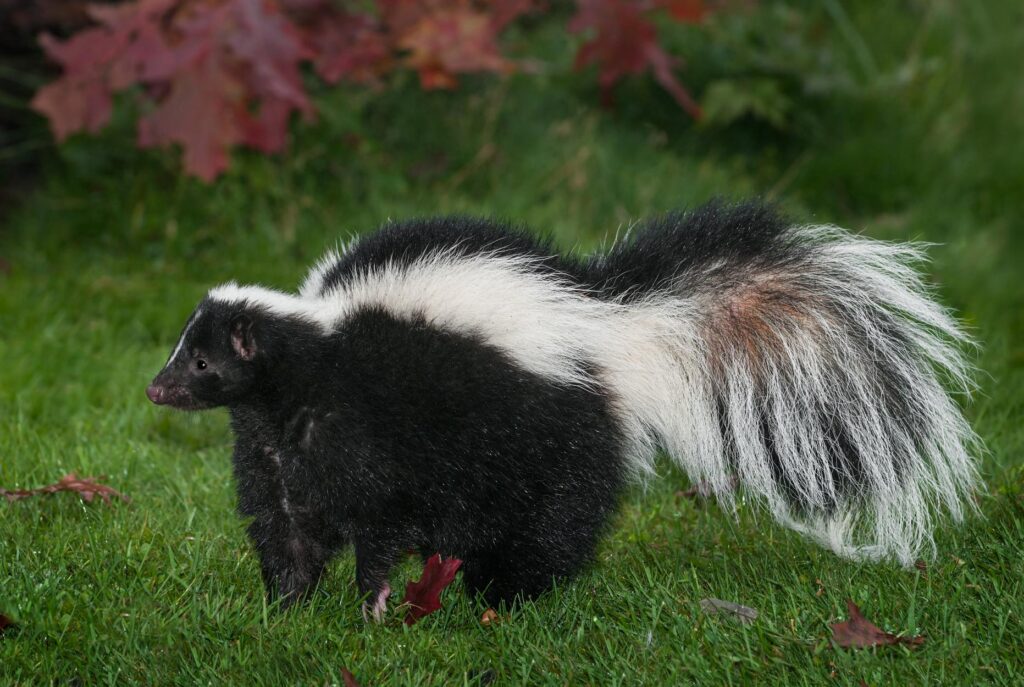Spring is an exciting time of year—warmer weather, flowers blooming, and longer days. But it’s also the time when wildlife wakes up, including some less-than-welcome visitors like skunks. If you’ve ever been startled by their unmistakable scent, you know they can make quite an impact.
Skunks become more active in spring as they search for food, mates, and shelter. Understanding their habits can help you avoid unwanted encounters and keep them from settling in your yard. Let’s talk about when skunks are most active, why they might be hanging around your property, and what you can do to keep them at a safe distance.
When Are Skunks Most Active?
Skunks are nocturnal, meaning they do most of their activity at night. However, their activity levels change throughout the year.
Spring (March – May)
This is skunk mating season. Males travel long distances to find mates, while females look for safe places to give birth. You’re more likely to see (or smell) them during this time as they move around more frequently.
Summer (June – August)
Baby skunks, or kits, start exploring the world outside their dens. Mothers are highly protective, so this is a time to be cautious around skunk families.
Fall (September – November)
Skunks prepare for winter by eating more and finding shelter. They don’t hibernate, but they do slow down during colder months.
Winter (December – February)
Skunks remain in their dens most of the time, only venturing out on warmer days to find food.
Because skunks are more active in spring, this is when you’re most likely to notice them digging around your yard, looking for food, or even nesting under your deck or shed.
Why Are Skunks in Your Yard?
Skunks aren’t wandering into your yard just for fun. They’re there for three main reasons: food, shelter, and breeding.

1. Food Sources
Skunks are opportunistic eaters, meaning they’ll take what they can get. Their diet includes:
- Insects, grubs, and earthworms
- Fruits and vegetables
- Small rodents
- Pet food left outside
- Garbage and compost
A skunk’s excellent sense of smell helps them find food, which is why they might dig up your lawn looking for grubs or raid your trash cans at night.
2. Shelter
Skunks look for dark, quiet places to make their dens. Common hiding spots include:
- Under decks, porches, and sheds
- Inside woodpiles or brush piles
- Beneath rock formations
- In abandoned burrows left by other animals
If your yard provides easy access to these types of spaces, skunks may move in and raise their young there.
3. Breeding and Nesting
Female skunks give birth in late spring, usually in May or June. They need a safe and hidden space to raise their kits. Once the babies are born, they stay with their mother for several months, meaning your yard could be a skunk nursery if you’re not careful.
How to Keep Skunks Away from Your Home
If you want to avoid a skunk problem this spring, the best thing you can do is make your yard less inviting. Here are some simple steps to take:
1. Secure Your Garbage and Compost
Skunks are attracted to food waste, so make sure your trash cans have tight-fitting lids. If you have a compost bin, keep it covered to prevent skunks from digging through it.
2. Remove Food Sources
- Bring pet food inside at night.
- Clean up fallen fruit from trees.
- Keep bird feeders out of reach or use ones that don’t spill seeds onto the ground.
- Treat your lawn for grubs, as these are a skunk favorite.
3. Block Access to Sheltering Spots
- Close off spaces under decks, porches, and sheds using mesh fencing.
- Stack firewood and brush piles neatly to eliminate hiding places.
- Fill in abandoned burrows to prevent skunks from moving in.
4. Use Natural Deterrents
Skunks have a strong sense of smell, which means certain scents can keep them away. Try using:
- Citrus peels – Skunks dislike the smell of oranges and lemons.
- Ammonia-soaked rags – Placing them in skunk-prone areas can discourage them from settling.
- Motion-activated lights or sprinklers – Sudden movement or bursts of water can scare skunks away.
5. Check for Dens Before Sealing Openings
If you suspect a skunk has already made a home on your property, don’t seal off their den right away. You could trap them inside, leading to bigger problems. Instead, try a simple test:
- Lightly block the opening with loose material like newspaper or straw.
- Check back in 24-48 hours to see if it’s been moved.
- If it hasn’t, the den may be empty, and you can safely seal it up.
What to Do If You See a Skunk
If you spot a skunk in your yard, don’t panic! Most of the time, they’ll leave on their own. However, if they seem too comfortable or have taken up residence, here’s what to do:
- Stay calm and don’t make sudden movements. Skunks only spray when they feel threatened.
- Give them space to leave. If you block their path, they may feel trapped.
- Never try to chase or scare them away. This increases the chance of getting sprayed.
- If needed, contact a professional. A pest control expert can humanely remove skunks from your property.
Stay One Step Ahead of Skunks
Springtime means more skunk activity, so now is the perfect time to take preventive steps. By securing food sources, blocking off sheltering spots, and using deterrents, you can keep skunks from making themselves at home in your yard.
If you suspect a skunk problem and need help, Genuine Pest Control is here for you. We offer safe, humane solutions to keep your property skunk-free. Contact us today for expert advice and services!
